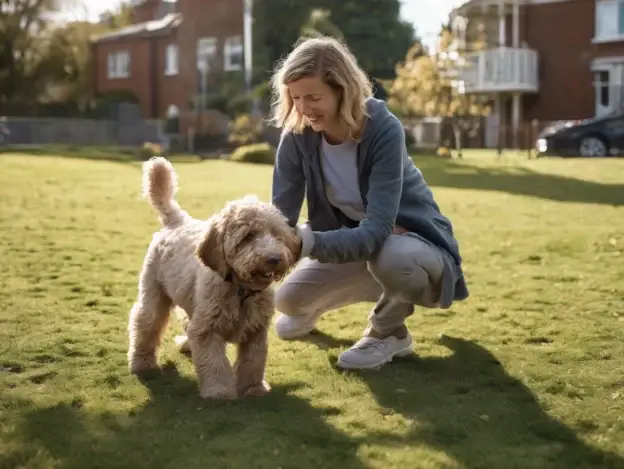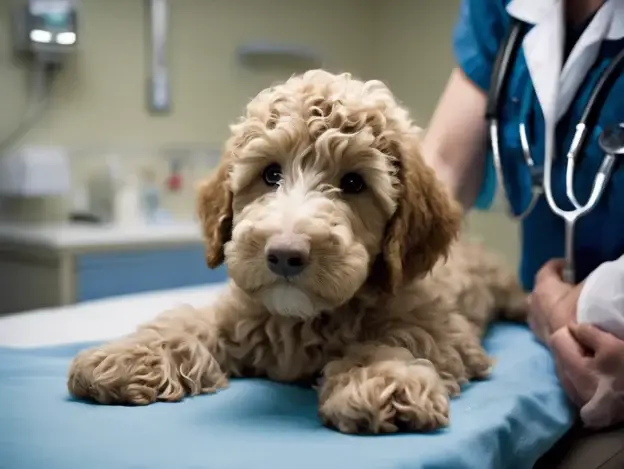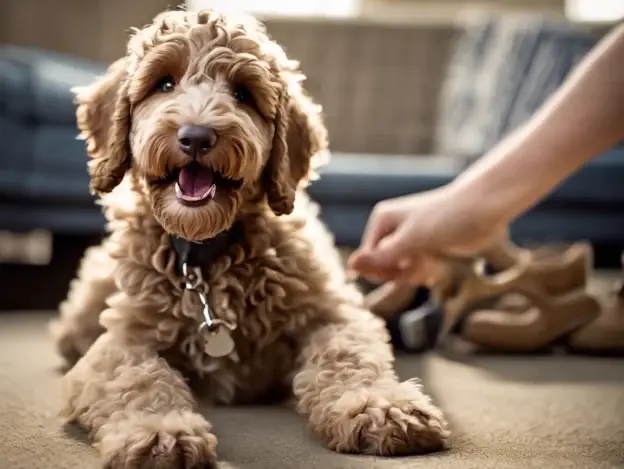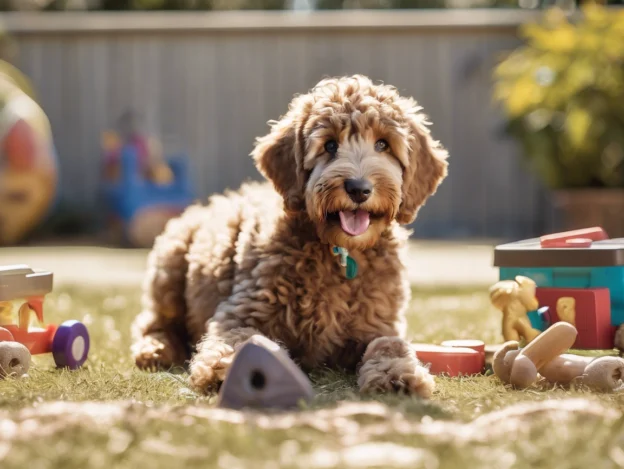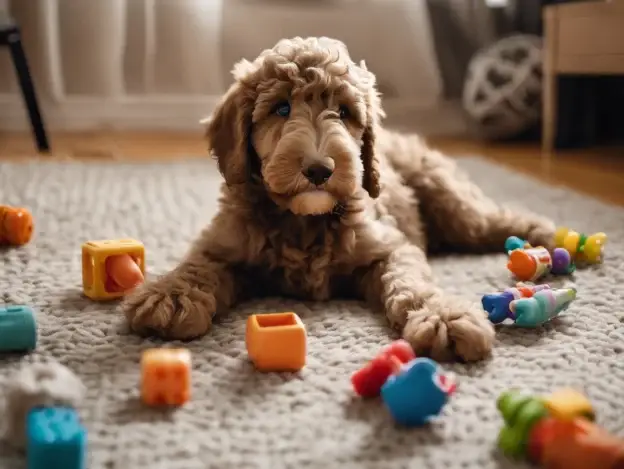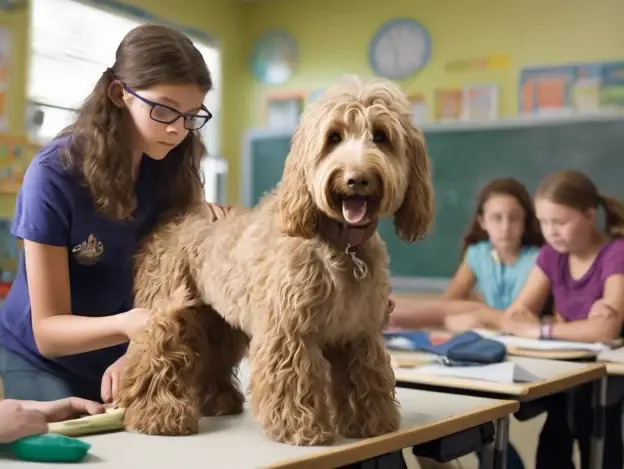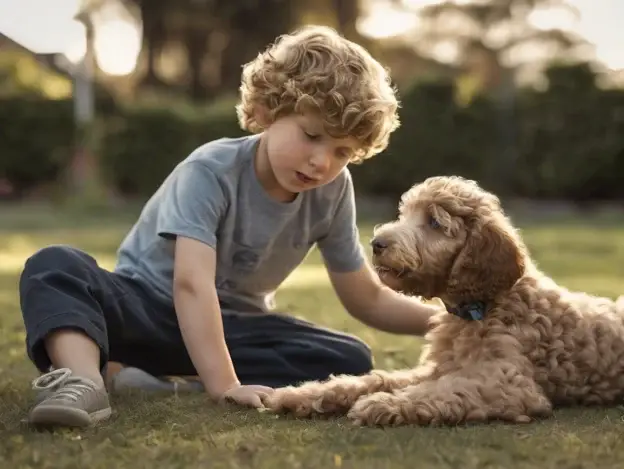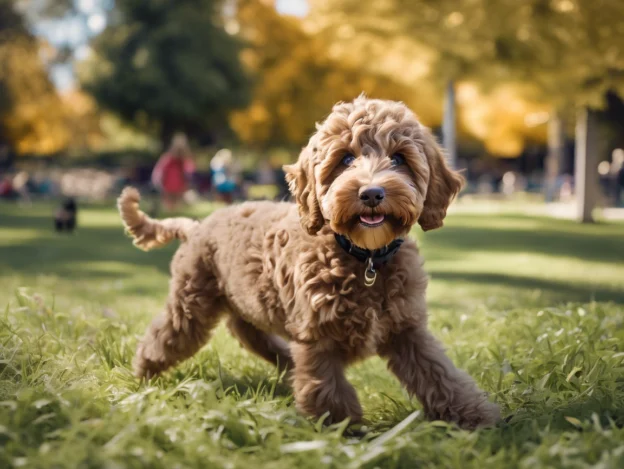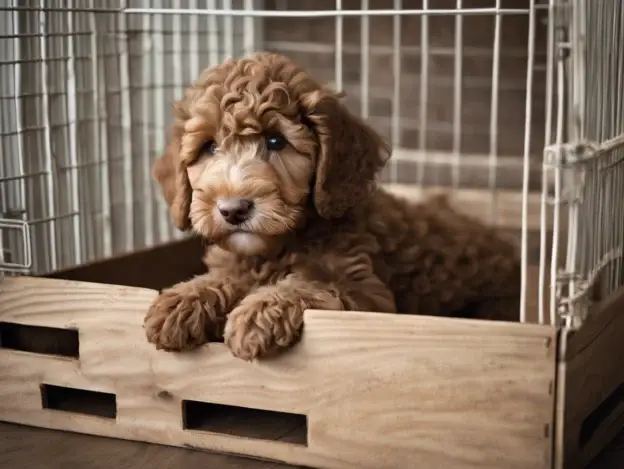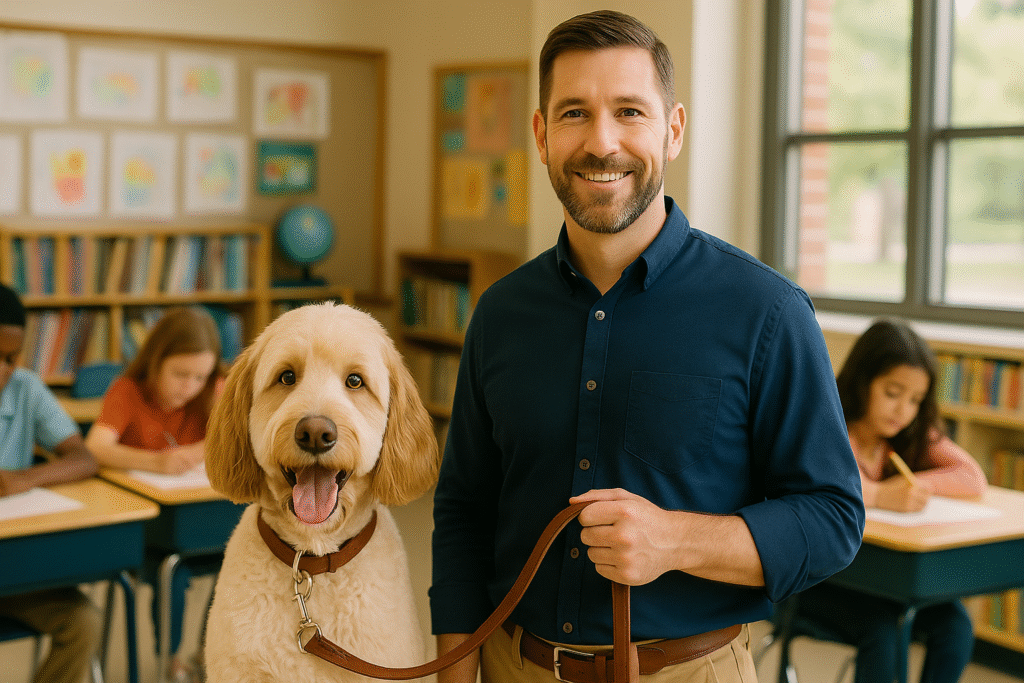
As your puppy approaches the 7-8 month mark, you’ve survived the early training days, teething, and perhaps the beginning of adolescence. Now you’re entering an exciting period where your growing dog begins to show glimpses of the adult companion they will become. This stage offers unique opportunities to solidify training, deepen your bond, and set the stage for a lifetime of companionship.
While your dog is still maturing both physically and mentally, these months represent a crucial transition period. The foundation you’ve built will now be strengthened and expanded upon, ensuring your puppy develops into a well-adjusted adult dog who’s a joy to live with. Let’s explore how to make the most of this important developmental stage.
Advanced Training Opportunities
By months 7-8, your puppy has likely mastered basic commands and is ready for more complex learning. This is the perfect time to expand their training repertoire.
Beyond Basic Commands
Intermediate Skills to Introduce
- Leave it with distance: Ignoring items even when you’re not close by
- Place/Go to mat: Sending your dog to a designated spot and staying there
- Heel: Walking politely beside you without constant treats
- Middle: Coming to position between your legs (useful in crowded areas)
- Emergency down: Dropping instantly on cue from any position
- Recall with distractions: Coming when called despite enticing alternatives
Chaining Commands
- Teach your dog to respond to a sequence of commands
- Start with two familiar behaviors (sit → down)
- Gradually increase to more complex chains
- Practice in different orders to ensure understanding
Duration, Distance, and Distraction For each known behavior, systematically increase:
- Duration: How long your dog holds the behavior
- Distance: How far away you can be while they maintain the behavior
- Distraction: The level of environmental challenge they can handle while performing
Real-World Applications
Training isn’t just about obedience—it’s about creating a dog who can navigate the human world comfortably.
Public Outings
- Practice calm greetings with strangers
- Visit pet-friendly stores with specific behavior expectations
- Teach settling at outdoor cafés or restaurants
- Navigate different surfaces and environments
Household Manners
- Reinforce boundaries around furniture (if desired)
- Establish protocols for visitors entering the home
- Practice leaving food or items on coffee tables unattended
- Strengthen door manners (not rushing through, waiting for permission)
Problem-Solving Skills
Teaching your dog to think and solve problems builds confidence and mental flexibility:
- Puzzle toys of increasing difficulty
- Scent work challenges
- Name recognition for multiple toys/items
- Simple obstacle courses with decision points
- “Find it” games with hidden objects
Solidifying Good Behaviors
As your puppy matures, it’s time to move from constant management to reliable behavior.
Proofing Reliable Responses
The Proofing Process
- Begin in a low-distraction environment with known behaviors
- Add one element of challenge (duration, distance, or distraction)
- Practice until reliable at that level
- Incrementally increase the challenge
- If mistakes occur, reduce the difficulty and build back up
Real-Life Proofing Scenarios
- Holding a stay while another dog walks by
- Coming when called away from interesting scents
- Walking politely past outdoor dining areas
- Greeting visitors calmly without jumping
- Settling while you eat dinner
Fading Rewards Appropriately
By now, your dog shouldn’t need a treat for every sit, but rewards remain important:
Variable Reward Schedules
- Transition from rewarding every correct response to intermittent rewards
- Vary the value of rewards (sometimes jackpot, sometimes praise only)
- Keep rewards unpredictable to strengthen behaviors
- Continue to reward heavily for challenging situations or particularly good responses
Life Rewards
- Use daily privileges as rewards (going outside, dinner time, play)
- Require a moment of impulse control before valued activities
- “Say please” by sitting: Before doors open, meals, leash attachment, play
Managing Adolescent Challenges
Many dogs are still working through adolescence at this age:
Consistency Through Testing Phases
- Maintain clear rules even when they’re tested
- Avoid the temptation to relax standards as your dog appears more mature
- Remember that regression is normal and temporary
- Return to basics if reliability decreases
Positive Reinforcement During Difficult Periods
- Focus on catching and rewarding good choices
- Avoid punishment which can damage your relationship during this sensitive period
- Increase environmental management during challenging phases
- Keep training sessions upbeat and successful
Transitioning to Adult Food
Between 7-12 months (depending on breed size), your puppy will be ready to transition to adult food.
Timing the Transition
Small breeds: 7-9 months Medium breeds: 9-12 months Large breeds: 12-15 months Giant breeds: 18-24 months
Signs your puppy is ready:
- Growth rate has significantly slowed
- Has reached approximately 80-90% of adult size
- Physical maturity indicators appropriate for breed
- Your veterinarian confirms appropriate timing
Making a Smooth Change
- Choose an appropriate adult formula (considering activity level, breed, and any special needs)
- Transition gradually over 7-10 days:
- Days 1-2: 75% puppy food, 25% adult food
- Days 3-4: 50% puppy food, 50% adult food
- Days 5-7: 25% puppy food, 75% adult food
- Days 8-10: 100% adult food
- Monitor stool quality during the transition
- Adjust portions based on adult metabolic needs
Feeding Considerations for Young Adult Dogs
- Establish regular feeding times (typically twice daily)
- Measure portions precisely to prevent weight gain as metabolism changes
- Adjust based on activity level and body condition
- Evaluate treats and chews as part of total daily intake
- Consider working meals (puzzle toys, training sessions) for mental stimulation
Long-term Socialization and Enrichment
Socialization isn’t just for young puppies—it’s a lifelong process that continues to shape your dog’s behavior and comfort in the world.
Continued Exposure to New Experiences
Ongoing Social Experiences
- Regular positive interactions with various types of people
- Supervised experiences with appropriate dog playmates
- Exposure to different handling (groomer, vet staff, friends)
- Practice with various human behaviors (people on bikes, joggers, etc.)
Environmental Diversity
- Visit different neighborhoods, parks, and natural areas
- Experience various surfaces and terrain
- Encounter different sounds and sights
- Practice in different weather conditions (appropriate to your climate)
Creating Enrichment Routines
Establishing regular enrichment activities prevents boredom and associated behavior problems:
Daily Enrichment Checklist
- Physical exercise: Appropriate to age, breed, and individual needs
- Mental stimulation: Problem-solving, training, or scent activities
- Social interaction: Quality time with human family members
- Sensory experiences: Different textures, sounds, or environments
- Choice opportunities: Allowing some agency and decision-making
Enrichment Ideas by Category
Food-based enrichment:
- Snuffle mats
- Stuffed Kongs or similar toys
- Puzzle feeders of increasing difficulty
- Scent games with hidden treats
- Training sessions using meal portions
Physical enrichment:
- Structured walks in new environments
- Appropriate play with other dogs
- Flirt pole play (with rules)
- Swimming (for water-loving dogs)
- Gentle tug games with clear boundaries
Cognitive enrichment:
- New trick training
- Scent discrimination games
- Object identification
- Simple agility or obstacle courses
- Hide and seek games with family members
Setting Up for Lifelong Success
The choices you make during this transitional period have lasting impacts on your dog’s adult behavior and quality of life.
Establishing Healthy Routines
Exercise Patterns
- Develop a sustainable exercise schedule you can maintain long-term
- Balance structured exercise (walks, play) with free exploration time
- Build in appropriate rest days
- Consider your dog’s individual energy needs and adjust accordingly
Sleep and Rest
- Ensure adequate quiet time (12-14 hours daily for adolescent dogs)
- Create a designated, comfortable sleeping space
- Respect rest needs even as your dog matures
- Teach a “settle” cue for calm relaxation
Social Boundaries
- Define consistent rules for furniture access
- Establish greeting protocols for visitors
- Create clear expectations for behavior around food and resources
- Maintain appropriate boundaries with other household pets
Addressing Emerging Behavior Patterns
The 7-8 month period often reveals behavior tendencies that will persist into adulthood. Identify and address these proactively:
Resource Guarding
- Implement trading games if mild guarding appears
- Create positive associations with approach to valued items
- Teach a reliable “drop it” and “leave it”
- Seek professional help for significant guarding behaviors
Reactivity Tendencies
- Create distance from triggers and work gradually on positive associations
- Teach focus and engagement cues for challenging situations
- Prioritize appropriate socialization with controlled exposure
- Consider professional guidance at first signs of reactivity
Anxiety Behaviors
- Build independence through gradual alone time
- Create positive associations with separation
- Establish predictable routines
- Address early signs rather than waiting for escalation
Building Communication Skills
As your dog matures, refine the communication system between you:
Reading Your Dog’s Signals
- Learn their subtle stress indicators
- Recognize excitement vs. anxiety
- Respect communication about comfort levels
- Honor appropriate requests for space or breaks
Clear Human Communication
- Consistent verbal cues
- Readable body language
- Predictable consequences (both positive and negative)
- Clear boundaries with fair enforcement
Preparing for the Teen Years and Beyond
While you’re seeing improvement at 7-8 months, most dogs continue maturing mentally for 2-3 years.
What to Expect in Coming Months
The 10-14 Month Challenge
- Often brings a second testing phase
- May include increased independence
- Can feature temporary regression in training
- Frequently involves changing social dynamics with other dogs
Physical Changes Continuing
- Muscle development
- Coat texture changes
- Growth plate closure (varies by breed size)
- Metabolism adjustments
Preparing for Adult Challenges
Health Monitoring
- Transition to adult veterinary schedule
- Watch weight as growth slows
- Monitor changes in exercise tolerance
- Address any emerging breed-specific concerns
Training Maintenance
- Schedule regular “refresher” sessions
- Gradually increase real-world expectations
- Prepare for advanced training opportunities
- Consider appropriate dog sports or activities
Celebration: Recognizing Your Progress
As you work through these important months, take time to celebrate how far you’ve come together.
Measuring Success
Success isn’t defined by perfection but by progress:
- Compare current behavior to three months ago
- Identify specific skills that have improved
- Recognize relationship milestones
- Celebrate increased reliability in real-world situations
Documenting Growth
Create tangible reminders of your journey:
- Keep a training journal noting breakthroughs
- Take regular photos showing physical development
- Video progress in challenging environments
- Note compliments from trainers, visitors, or fellow dog owners
Conclusion: The Journey Continues
The 7-8 month period marks not an endpoint but a transition in your relationship with your maturing dog. The puppy days are gradually giving way to a more mature partnership, but your dog still needs your guidance, consistency, and leadership.
By focusing on advanced training, solidifying reliable behaviors, making appropriate nutritional transitions, and continuing socialization and enrichment, you’re setting the stage for the wonderful adult dog your puppy is becoming.
Remember that development isn’t linear—there will be steps forward and occasional steps back. What matters most is the consistent, positive relationship you’re building. The investment you make during these crucial transitional months will shape your life together for years to come, creating the family companion you’ve been working toward since those early puppy days.
